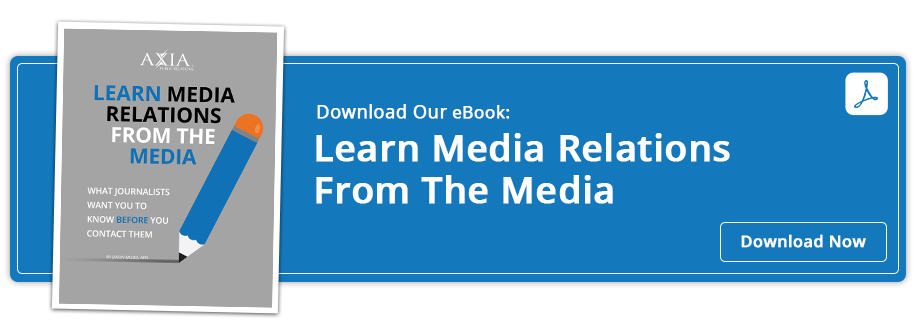![]() 3 tips to improve your pitches
3 tips to improve your pitches
For more than 25 years, I worked as a journalist. During that time, I would pitch story ideas, while simultaneously learning the preferences of my editors. One time, an editor declined my offer to write about an emerging artist. "What will your second paragraph say?" he asked. He explained that he wanted human interest. So, I gave him plenty. I repitched the story, providing details about an 88-year-old dying artist, who was bedridden and painting with an easel sprawled out on his stomach. This time, my editor approved the story.
I learned this valuable lesson as a journalist, and it’s equally beneficial to public relations professionals. Reporters must obtain approval for stories from editors, so knowing what and how to pitch makes a difference. As you build relationships with reporters, use the three tips below to increase your pitching success.
- Be prepared to answer the question, "What will your second paragraph say?"
Often PR professionals provide answers to the key questions, Who? What? When? Where? Why? and How? as the lead for a news release. While all of this information is relevant, news features require more. Simply providing data may land you a spot on a weekly calendar, however, this rarely leads to a feature article. While you might stick to the basics in your news release, give your pitch some life. Tell reporters all about an upcoming art exhibit in your press release. Then, in your pitch, explain that the leading artist is an 88-year-old in hospice care, who paints in bed with his easel lying flat on his stomach and has completed more than 40 pieces of art in two weeks.
- Put details in context for the reporter.
Reporters receive hundreds of press releases every week. Often, they select the pitch they can write quickly and with the least effort. Provide details, then explain how the details fit in the story. For example, tell the reporter that while the exhibit features 40 artists, only one painted his submissions while in hospice care. Don’t leave these human-interest details for the journalist to discover.
- Connect your pitch to trends and daily news when applicable.
Look for trends and news related to your story. Capture the reporter’s attention with the lead, then explain why your story matters. In the case of the art exhibit and the dying artist, you could include trends related to terminally ill artists.
Axia Public Relations specializes in media relations. Our experts will craft your pitches to engage media and increase your positive news coverage, while staying true to your brand. To find out more, contact us or download our complimentary e-book “Learn Media Relations from the Media” today.
Cassandra Fortin is a graduate of the University of Tampa, where she earned a Bachelor of Arts degree in advertising and public relations. Her background includes more than 25 years as a professional journalist. She has written for more than 40 publications, including the Chicago Tribune, Crain’s Chicago Business, Baltimore Magazine, and the Baltimore Sun. Currently, she works as a public relations consultant.
Topics: media relations, PR tips, earned media



Comment on This Article